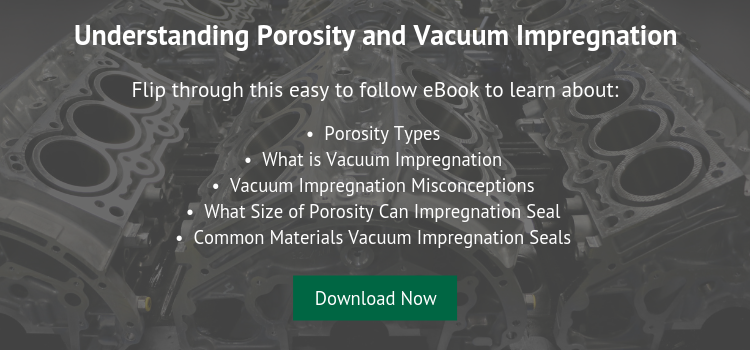One of the most common questions in vacuum impregnation is how much does it cost to impregnate a part, or in other words, how much sealant will a part consume? Parts consume sealant in two ways as part of the normal vacuum impregnation cycle.
The first way that parts consume sealant is that sealant actually penetrates and gets trapped inside the part where the sealant then solidifies and seals the part. The second way sealant is consumed in the vacuum impregnation process is the design waste. This is the excess sealant on the outside of the part that ultimately gets washed off and discarded. If you know the amount of sealant that gets trapped (picked up) inside the part during the impregnation cycle, then you can do a rough estimate of the overall cost simply by multiplying the “pick up” amount by 4.
This calculation not only takes into consideration the sealant cost but also compensates for compressed air, electricity, water, labor, and design waste associated with the overall vacuum impregnation process. It does not, however, include any factor for profit, depreciation, freight, general or administrative expenses, selling costs, or any other non-impregnation process costs.
With that in mind, we can provide some basic information to help you establish sealant pick up rates for both powder metal (PM) parts and traditional aluminum-based parts. This information is based on historical data and is only meant to provide a ballpark understanding of typical sealant consumption. Given that every part is unique and different your application may or may not adhere to these guidelines. As for PM parts with a typical density of 6.8, you can assume an average pick up rate of 1 gram of sealant for every 40 grams of compacted metal. So, if a compacted part weighs 160 grams it will usually pick up about 4 grams of sealant.
For aluminum, let’s assume a density of 2.8 grams/milliliter. If you know the weight of the aluminum part in grams you can simply divide that by the density to get the volume of the part in milliliters. By dividing that by 1,000 you can convert the volume to liters. Once you have the volume you can simply multiply that result by a factor of 8 to get the estimated sealant pick up. For example, if a part made from aluminum weighs 1,500 grams, divide that by 2.8 to get 535mL. Divide 535 by 1,000 to convert to liters which will yield .535. Multiplying the .535 by 8 will provide an estimated sealant pick up of 4.3 grams. This information can then be used to help establish your annual sealant volume or daily sealant consumption.




